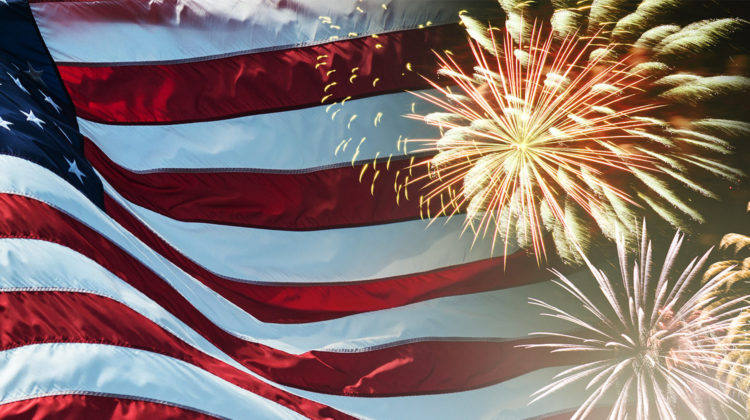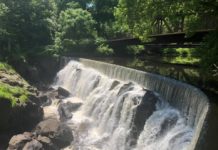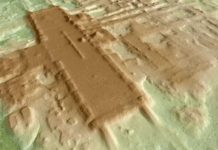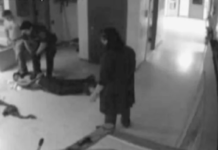 Do American Indians Celebrate the 4th of July?
Do American Indians Celebrate the 4th of July?
The National Museum of American Indian asks do American Indians celebrate the 4th of July and let their readers tell their stories about the day
The following was originally posted on July 3, 2013 by the National Museum of American Indian and has been updated with more readers’ comments and descriptions. Follow the discussion on the museum’s Facebook page.
How do Indians observe the 4th of July? Do we celebrate? To answer, let’s turn back the pages of time. A reasonable chapter to begin in is July 1776, when the Continental Congress adopted the Declaration of Independence and 13 colonies became the United States of America. With the emergence of a nation interested in expanding its territory came the issue of what to do with American Indians. History tells us that as the American non-Indian population increased, the indigenous population greatly decreased, along with their homelands and cultural freedoms.
From the beginning, U.S. government policy contributed to culture and land loss. Keeping our focus on the 4th of July, however, let’s jump to the early 1880s, when Secretary of the Interior Henry Teller developed what has come to be called the Religious Crimes Code—regulations at the heart of the Department of Interior, Office of Indian Affairs, Code of Indian Offenses that prohibited American Indian ceremonial life.
Intergenerational Trauma: Understanding Natives’ Inherited Pain
Download our free report, Intergenerational Trauma: Understanding Natives’ Inherited Pain, to understand this fascinating concept.
Teller’s general guidelines to all Indian agents were to end tribal dances and feasts. Enforced on reservations, the code banned Indian ceremonies, disrupted religious practices, and destroyed or confiscated sacred objects. Indian ceremonial activities were prohibited under threat of imprisonment and/or the withholding of treaty rations.
The Secretary of the Interior issued this Code of Regulations in 1884, 1894, and 1904 through Indian Affairs Commissioner’s circulars and Indian agent directives. Indian superintendents and agents implemented the code until the mid-1930s. During this 50-year period, Indian spiritual ceremonies such as the Sun Dance and Ghost Dance were held in secret or ceased to exist. Some have since been revived or reintroduced by Indian tribes.
In response to this policy of cultural and religious suppression, some tribes saw in the 4th of July and the commemoration of American independence a chance to continue their own important ceremonies. Superintendents and agents justified allowing reservations to conduct ceremonies on the 4th of July as a way for Indians to learn patriotism to the United States and to celebrate its ideals. That history is why a disproportionate number of American Indian tribal gatherings take place on or near the 4th of July and are often the social highlights of the year. Over time these cultural ceremonies became tribal homecomings. American Indian veterans in particular were welcomed home as modern-day warriors. The Navajo Tribe of Arizona and Pawnee of Oklahoma are two examples of tribes that use the 4th of July as an occasion to honor their tribal veterans.
During these celebrations, tribal flag songs and veterans’ songs are sung. More than 12,000 American Indians served during World War I, and after the war, the American flag began to be given a prominent position at American Indian gatherings, especially those held on the 4th of July. This symbol of patriotism and national unity is carried into powwow and rodeo arenas today. It is extremely important to note that before the Reservation Era, when most Indians saw the American flag coming toward their villages and camps, it symbolized conflict, death, and destruction.
Today tribes hold ceremonies and celebrations on or near Independence Day for different reasons. The Lumbee of North Carolina and Mattaponi of Virginia use this time as a homecoming for tribal members to renew cultural and family ties. The Kiowa Tribe of Oklahoma holds Gourd Clan ceremonies on the 4th of July because the holiday coincides with their Sun Dance, which once took place during the hottest part of the year. The Lakota of South Dakota and Cheyenne of Oklahoma continue to have some of their annual Sun Dances on the weekends closest to the 4th of July to coincide with the celebration of their New Year. Some American Indians do not celebrate the 4th of July because of the negative consequences to Indian people throughout history, while others simply get together with family and have cookouts, like many non-Native American citizens.
Jumping ahead to the present: To find out how American Indians across the country spend their 4th of July, we went to Facebook. This handful of replies represents both the diversity of responses we received and the direction of the discussion:
Carnegie, Oklahoma: We celebrate every 4th Gourd Dancing, camping, and visiting my Kiowa people while we’re here, listening to the beautiful Kiowa songs. For three days we are just in Kiowa heaven. Been doing this for years. Now my parents have gone on, but we will continue to attend the Kiowa Gourd Dance Celebration.
Oklahoma City, Oklahoma: Do American Indians celebrate the 4th of July? Answer: Yes, it represents freedom in the United States of America. Freedom to continue to worship Creator, freedom to dance my prayers, freedom to sweat, freedom to rise early and pray the day in and be up late to pray the day out. We, the Host People, celebrate the 4th of July every day!
Prewitt, New Mexico, and the Navajo Nation: No, I do not celebrate. Because I as a Diné will never relinquish my belief or understanding that we as a people and a nation have the right to be loyal to the Holy Ones before all others, including the United States of America, since we as a people existed long before there was ever a United States.
Taos, New Mexico: Taos is a very close knit community, and even more so at Taos Pueblo nearby. Both have had many citizens serve in America’s military in the heartfelt belief that they are protecting our nation. One of our honored tribal elders is Tony Reyna, 97, who survived the Bataan Death March in World War II. I have been told many times that, for us, the idea of protection goes deeper than for most Americans, because this land is where our people emerged, and that any threat to it is met from a place of deep, deep meaning. People here celebrate Independence Day pretty much as they do everywhere. It’s a day off, and there are parades and fireworks displays. But for many we remember WWII, Korea, Vietnam, Iraq and Afghanistan, and the sacrifices our people made. I wish all people could remember that, especially those who allow blind bigotry and hate to cloud their judgment.
Parshall, North Dakota, and the Three Affiliated Tribes: The 4th is the celebration of independence, which Native people have practiced as sovereign nations for generations.
Shawnee, Oklahoma: No, I do not celebrate Independence Day, simply because the Declaration of Independence labels my people “our enemies, the merciless savages of our frontiers.” You notice they were already calling the frontiers “ours” when the land was not theirs. Because I do not celebrate Independence Day does not mean I am not proud of our Native American veterans and soldiers. I am very proud of them and of the fact almost all Native American families have a family member who is a veteran and/or an active member in the Armed Forces.
Anadarko, Oklahoma: I am Kiowa/Delaware/Absentee Shawnee, my mom is a Kiowa/Comanche, my uncle is a vet, as many of my other relatives are, as well as my stepdad (Comanche/Caddo). My Delaware grandma always said, “This is not our holiday. Out of respect we will honor their day, because our people helped them.” She said, “I will mourn on this day.” She would wear a black dress that day.
Intergenerational Trauma: Understanding Natives’ Inherited Pain
Download our free report, Intergenerational Trauma: Understanding Natives’ Inherited Pain, to understand this fascinating concept.
Laguna, New Mexico, and the Pueblos of Acoma and Laguna: I celebrate the 4th of July and I do so proudly. … When you have been lucky enough to travel and see life in other places, you come to appreciate the home and land you live on. Maybe I’m not as bitter as some of my other Indigenous brothers and sisters because my tribes were not relocated and have been lucky to remain on ancestral lands. Our Pueblo people … fought against the Spanish in the Pueblo Revolt, but also learned to harmonize with the Catholic Church. Many years—even centuries—of healing have taken place to get us to this point. And I think by celebrating the 4th of July, I feel I am honoring that healing my Pueblo ancestors have prayed for. …
Sawmill, Arizona, and the Navajo Nation: I recognize Independence Day as a day off, as time with family. I recognize that the United States declared its independence on that day, but Native people weren’t a part of their envisioned emancipation. As Native people, we recognized our independence through our prayers and practicing our traditions. We didn’t need a special day to mark our freedom, we just were. So on the 4th of July, I will practice my American heritage and celebrate this country’s Independence Day. But my heart knows I don’t need a day to recognize my autonomy.
Oklahoma City and the Choctaw Nation of Oklahoma: I think of the 4th of July as American Ideals Day. If only America would live up to its own stated ideals, none of what happened to American Indian people would have happened. Today, if those ideals were finally acted upon, American Indian sovereignty would be fully recognized and the treaties would be kept intact. The fireworks celebrate the great ideals that could be America, if only greed were not allowed to pervert them.
Norman, Oklahoma: My 13-year-old son (Comanche/Cherokee) is currently reading the U.S. Constitution (just because). When I asked him about the 4th the other day, he kind of shook his head and said that most people just don’t get it. Reading the comment above on American Ideals Day made me think of how true it is—how little we know about America’s ideals of the past and where we hold them now.
Wichita, Kansas: My people, Kiowas, have always held this time of the year as a gathering of all our bands. They would celebrate for a week, indulging in each society’s dances, renewing friendships, visiting relatives, and so on. As we progressed into this modern society we are a part of, we recognized the importance of this celebration even more so. To honor our freedoms and the men and women who sacrificed for us today is truly a reason to celebrate the 4th of July. Does it mean we are to forget our struggles and the plight of our people? NO, but it commemorates the beauty of our land and the resolve of this nation we call America.
Pawnee, Oklahoma: [It’s a day] to celebrate all our Native men and women who served in the Armed Forces of the United States of America, our Native men [the Codetalkers] without whose tribal language, [World War II] might have been lost. To honor our fallen ones, who sacrificed their lives for us, and the veterans who are buried in our tribal cemeteries… and overseas. To honor my daughter … in the U.S. Army, a proud Native American woman who is serving our country.
Waikoloa, Hawai’i, via the Red Cloud Indian School, Pine Ridge, South Dakota: It is a sad time, … thinking of all the treaties never honored. I try to hold my children and grandcubs near and invite others who are alone or ill or elderly to eat lots of food that I cook until I am very tired and thank the Creator for another wonderful day.
As Americans everywhere celebrate the 4th of July, I think about how many American Indians are taking their yearly vacations back to their reservations and home communities. All across Indian country, tribes hold modern celebrations— including powwows, rodeos, and homecomings—that coincide with the United States’ Independence Day celebrations.
As for me, I’ll be with my two daughters, and we’ll watch a huge fireworks display!
Dennis Zotigh (Kiowa/San Juan Pueblo/Santee Dakota Indian) is a writer and cultural specialist at the Smithsonian National Museum of the American Indian in Washington, D.C.
This story was originally published on ICMN on July 4, 2014.












